Sharing is caring!
Year after year I have used George Ella Lyon’s Where I’m From Poem in my classroom but in the last couple of years I’ve also added an alternative Where I am From Poem example using “My Honest Poem” by Rudy Francisco.
Using the spoken word poem by Rudy Francisco has provided new dimension to a lesson that was getting a bit stale for me and my students. Plus, the opportunity to incorporate spoken word poetry is something I am always keen on including in class.
Keep reading for a Where I’m From poem lesson plan to see how you can use this amazing poem in your classroom.
Where I’m From Poem Lesson Plan
First, provide students with a copy of the poem and give them a chance to read through it on their own. Next watch the performance. While watching, have students do some annotations on the poem – where do they notice emphasis, what stands out to them in wording AND performance.
In small groups, have students share their observations of the poem. This can be done as small group discussion or silent discussions at first.
To facilitate a silent discussion tape a copy of the poem onto large chart paper. Have each student choose a different color to write in and add their name on the page in that color; this provides accountability and easy observation of that accountability. From there, students write their observations of the poem drawing attention to the content of the poem and building on the comments of their peers. This exercise is a wonderful opportunity for the quieter students in class who can participate without ‘saying’ a word.
A final step before shifting to out loud discussion is to do a ghost walk where students quietly go and check out the work of the other groups. After this is complete, an out loud discussion can happen in those groups or, better yet, as a class.
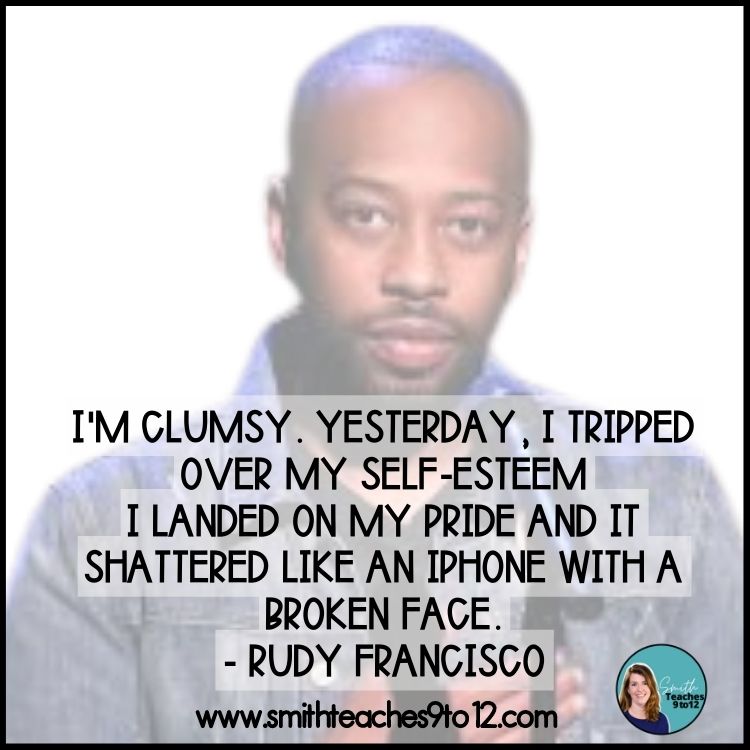
When this out loud discussion happens it’s the best opportunity to ensure an understanding of what Francisco is doing in his poem. He provides mundane and self-deprecating observations of himself with a touch of humor.
You might draw students’ attention to lines such as
- “I was born feet first and I’ve been backwards ever since” for its use of contrast and humor.
- “I’m clumsy. Yesterday, I tripped over my self-esteem / I landed on my pride and it shattered like an iPhone with a broken face” for its use of (unexpected) simile.
- “I know it sounds weird but sometimes, / I wonder what my bed sheets say about me when I’m not around / I wonder what the curtains would do if they found out / About all the things that I’ve done behind their backs” for its personification.
- “Hi, my name is Rudy / I enjoy frozen yogurt, people watching / And laughing for absolutely no reason at all” for its simplicity in personal description.
As a final step, students write their own honest poems. This is where it takes the place of the more traditional Where I’m From Poem. This could be used for an introductory lesson where students write a poem about themselves or use it later in the year to write an honest poem about a particular character from a fictional text being read in class. This is also an opportunity to repeat the template so students have some familiarity. This repetition could be done in groups, especially useful if you’re doing literature circles or book clubs in class.
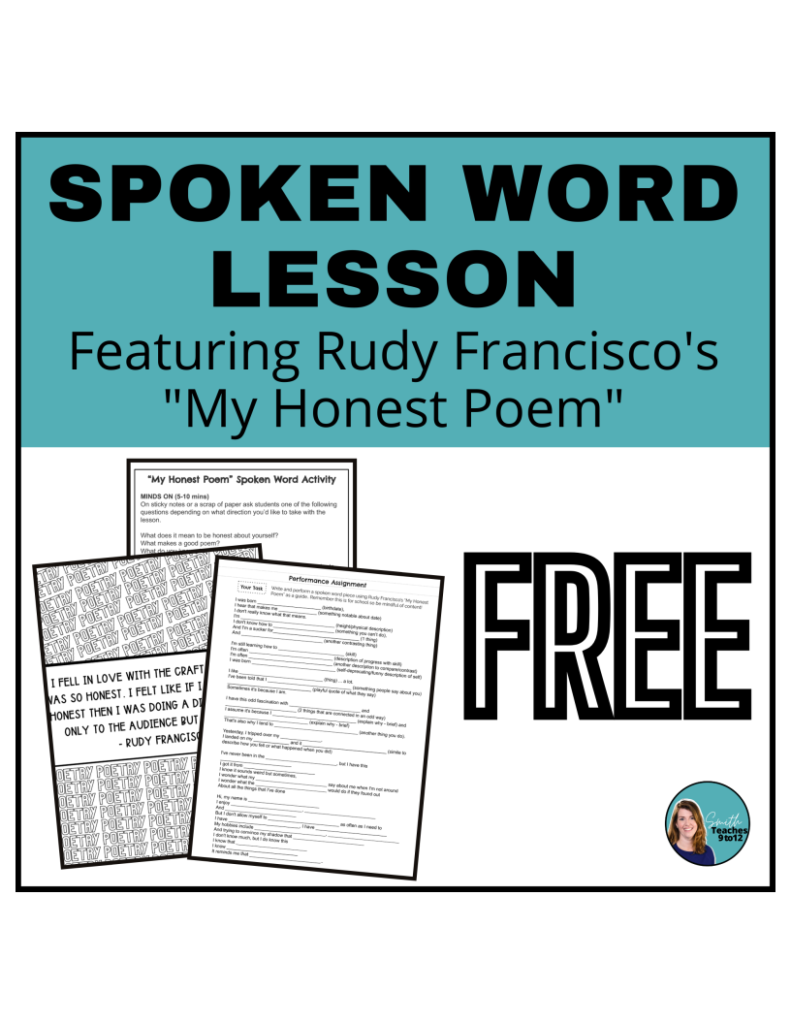
Check out this scaffolded Where I’m from poem template for students to write their own poems.
So that’s how I do it in my class but I also wanted to share some observations from another teacher who did this activity with her students.
Where I’m From Lesson Plan: Take 2
A few months ago Molly from That Awkward Teacher posted something in her stories while she was procrastiplanning – you know when you’re procrastinating from something by planning lessons for the future. And I responded by sharing my love for Francisco’s poetry and his “My Honest Poem” specifically.
When she returned to the classroom she tried it with her classes and was kind enough to share her lesson, success, and good-to-know for next time learning and to indicate that I could share it with you too!
On the first day of the activity, without context, she had them text friends/family to ask “How would you describe me?” So then on the day of, she indicated they would do another student survey, and had them fill out the first sheet of a Google Slides (see image of the first slide below). Again, this was done without context.
Then, the class watched the poem and talked about favorite lines. From there, she mentioned that they may have noticed they already did the brainstorming but that it wasn’t for all sections because some needed more context.
She shared a copy of the template through GoogleClassroom and students plugged in their brainstorming to the final copy and deleted the guidance/notes.
To address the variety of skill levels in class as well as timing, one section was made optional because it was more figurative.
According to Molly, overall, it went well, but she was hoping for it to be a one-day activity in terms of writing it, but it might require two different days (Note: This will depend on the length of your class periods.). A lot of kids just plugged things in, and then either didn’t think or were scared to edit things to make it fit/flow or be coherent. In order to address that challenge, she’s going to revisit it the next class so students can revise and resubmit.
As a final step, Molly will highlight some of favorite lines from some of the students’ poems.
{Thank you to Molly for sharing her experience with this lesson plan!)
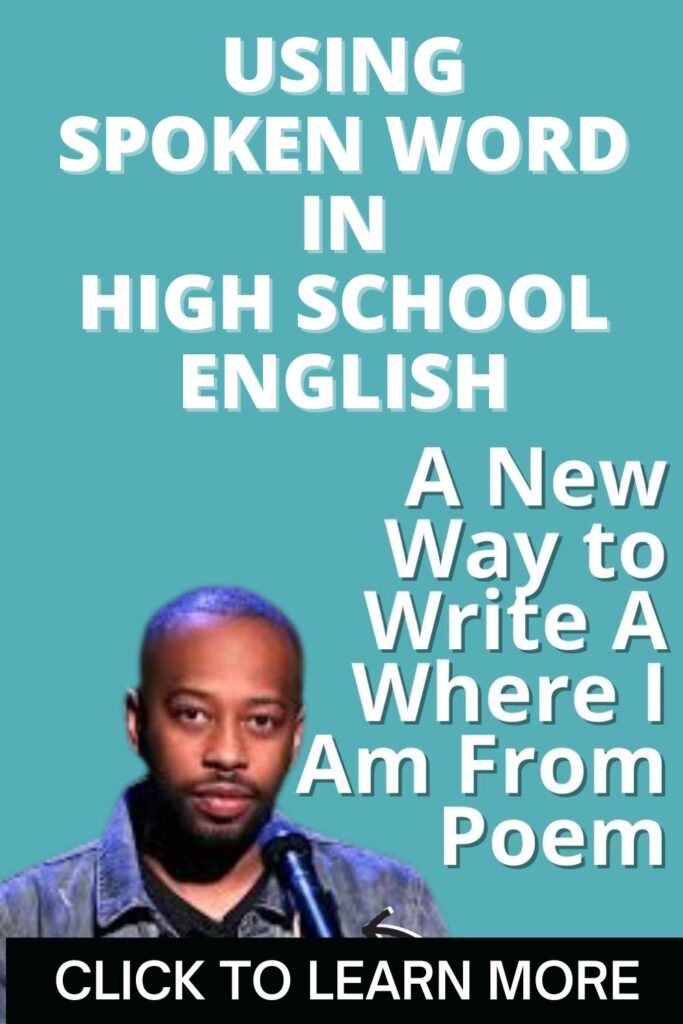
I think poetry is a bit like broccoli, the best way to get students (and teachers) to like it is through repeated exposure. So whether you choose the traditional Where I’m From poem or go with something a bit more unconventional or new-to-you, adding in poetry to your classroom at all times of the year is a wonderful thing! More poetry in short bursts and within established units will work wonders to address students’ reluctance and reticence with poetry!
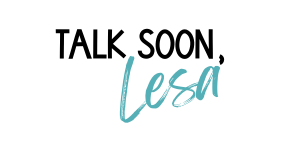
Related articles:
- 6 Ways to Include Poetry in Your Next Novel Study
- 4 Ways to include more poetry in ELA this year
- No Writing Poetry Options For ELA

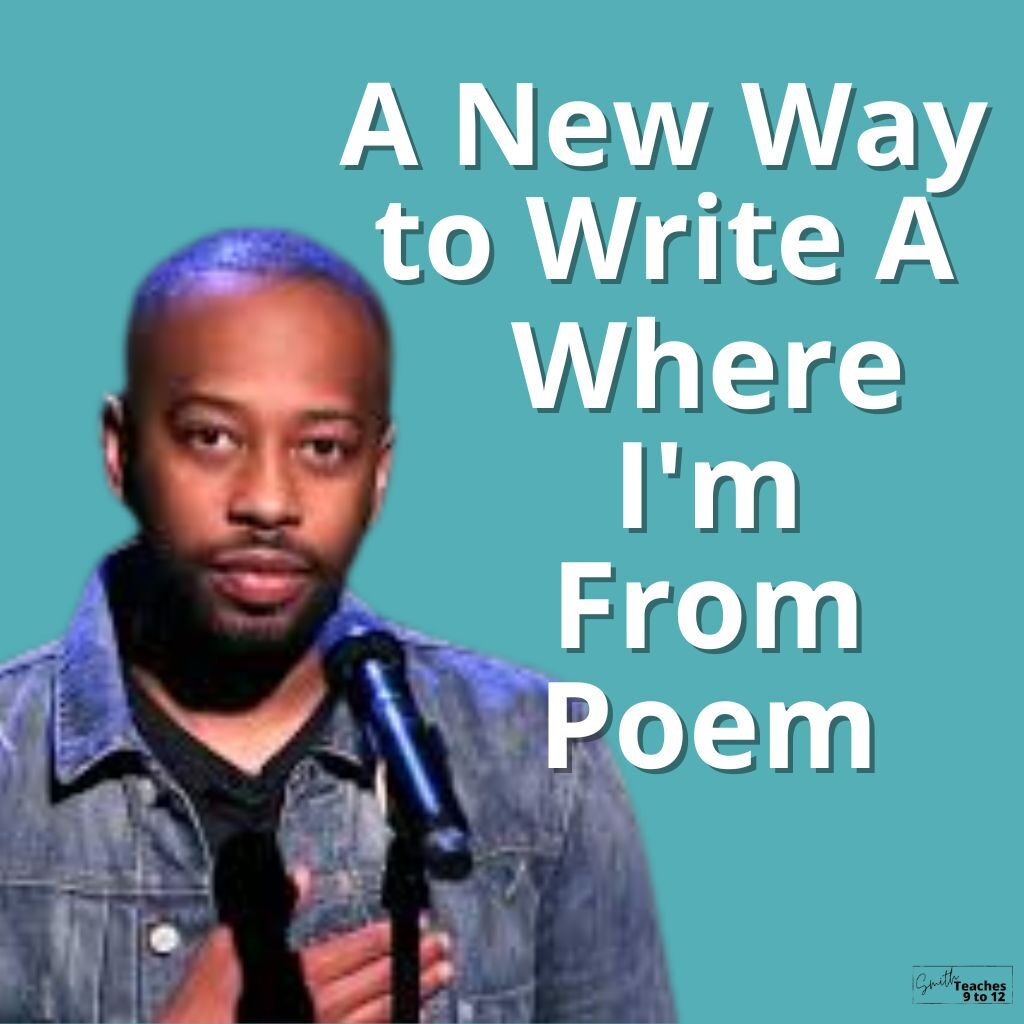
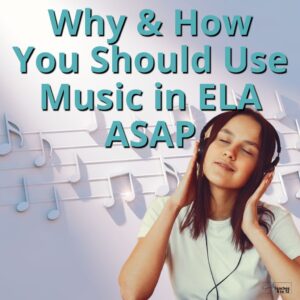
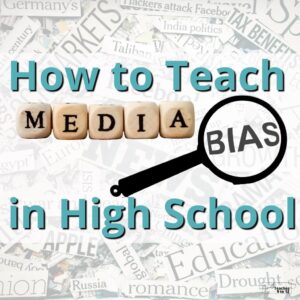

One Response